The following exhibition was displayed at Peter Pap's San Francisco gallery in conjunction with a talk by Stefan Ionescu hosted by the San Francisco Bay Area Rug Society and Peter Pap in December 2010. Please click on any of the pieces presented here for more information or feel free to contact Peter Pap Oriental Rugs.
| |
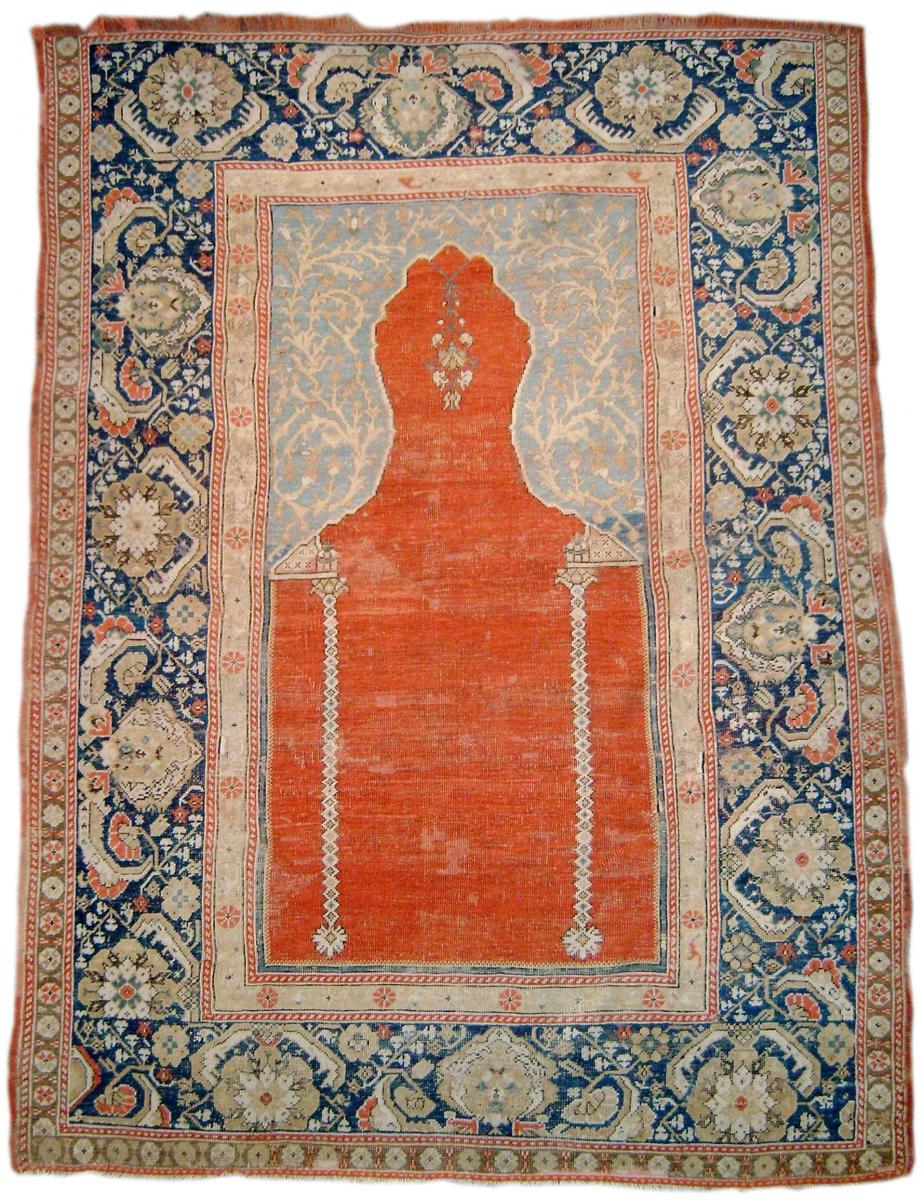
| 14946 Kula Prayer Rug (Transylvanian Type), Turkey, circa 1700 This prayer rug was probably woven sometime before or slightly
after 1700 in Kula, which is in the Aegean region of Asia Minor.
The columns and light blue arched portico with golden arabesque
represent a stylized rendering of mosque architecture. The floral
device hanging in the center of the arch seems to be an adaptation
of what was once conceived of as a lamp. While rugs of this type
were certainly woven for local consumption many were also
exported. Indeed, our knowledge of this type comes largely from
examples preserved in Protestant churches in Transylvania where
they were routinely donated by merchant families and displayed
from the church walls.
SOLD
|
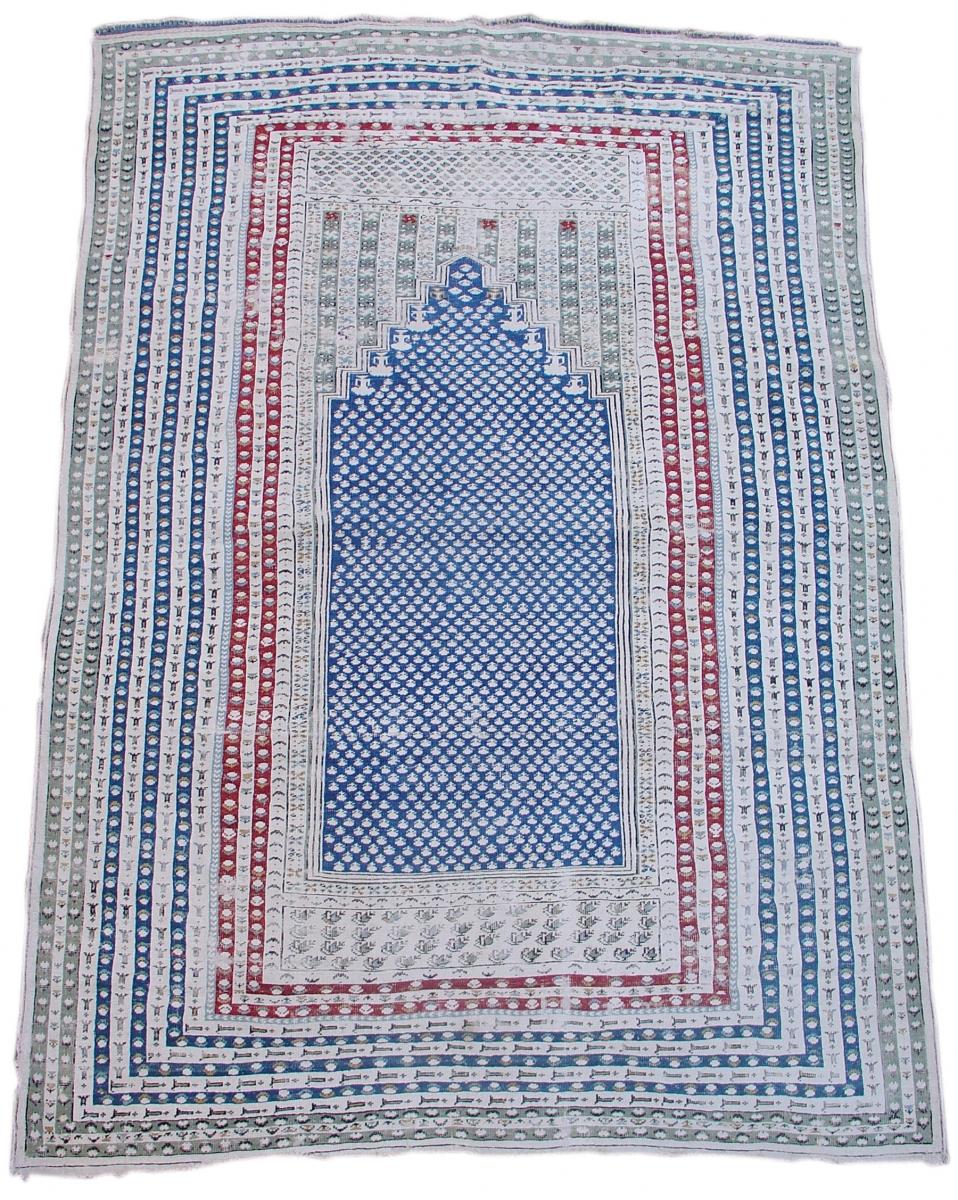 | 14888 Ghiordes Prayer Rug, Turkey, 19th C (1st half)
Eighteenth and nineteenth century rugs from Ghiordes in
western Anatolia are characterized by their use of cotton
and their striped borders, derived from Ottoman textiles.
Despite being finely woven, the use of cotton throughout
this piece creates a bold graphic effect emphasizing both
color and shade as well as texture.
SOLD
|
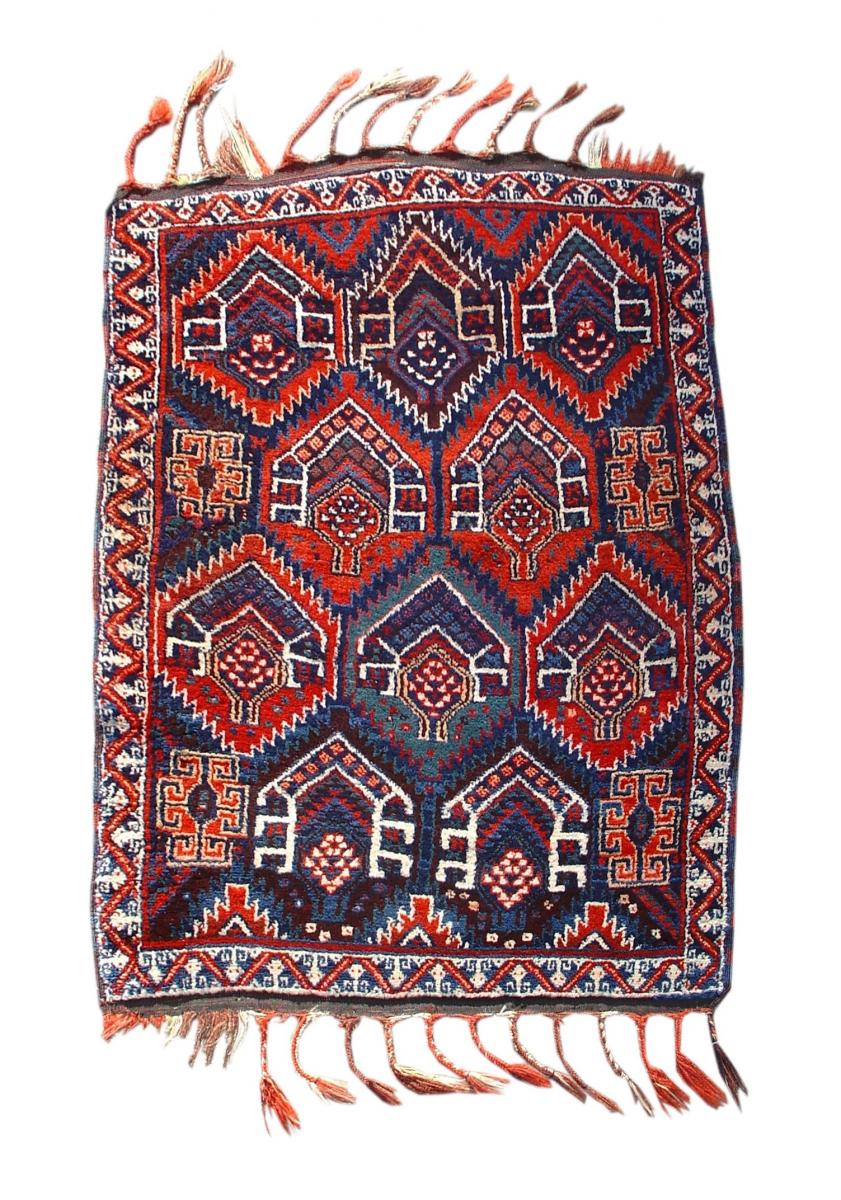
| 13275 Kurdish Rug, 19th C (4th Q)
Whether from eastern Anatolia or northwest Persia,
the rugs of the Kurds are known for their lush soft
wool. This piece does not disappoint. Geometricized
palmettes are boldly drawn and surrounded by a thin
border with an oscillating ribbon design. The long
braided ends are also noteworthy. While certainly
indicative of a tribal origin the alternating color of
the warps mimic a technique employed by fine
Persian village rugs and textiles often using a silk
foundation. This weaving is all wool but may have
been considered just as luxurious to its tribal weaver.
|
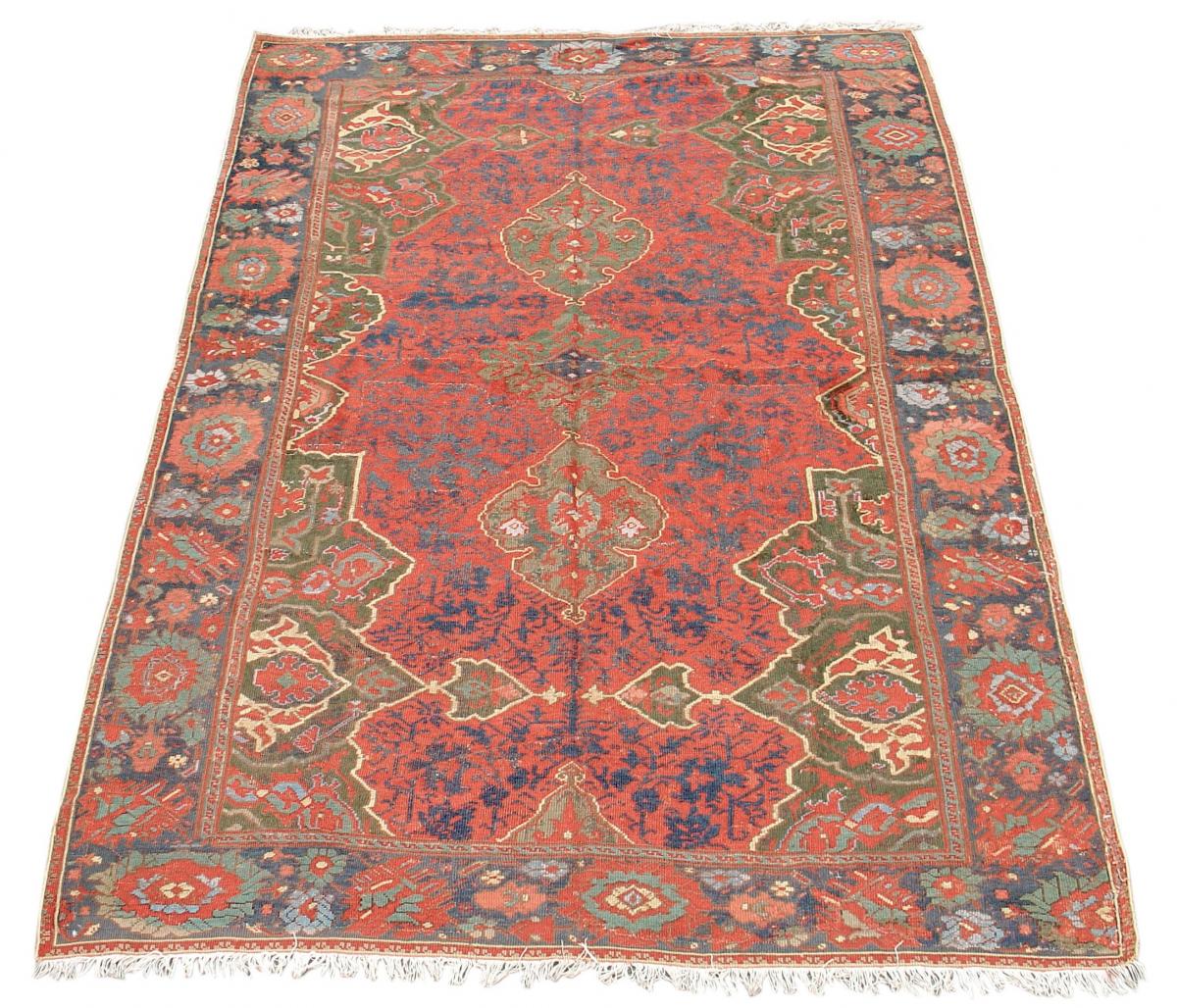 | 11710 Ushak Carpet Fragment, Turkey, 17th C (2nd half)
Carpets ascribed to the western Anatolian town of Ushak
are perhaps the most iconic of classical Ottoman weavings
and the most well known variant of these are the so-called
‘medallion Ushaks’, which employ a large format medallion
center flanked by corner-pieces composed of quarters of a
similar medallion. This piece is a fragment or rather a pastiche,
composed of the top and bottom third of a carpet while the
medallion center is missing. Most probably the center had
become quite damaged and was removed some time in the
first half of the twentieth century when the piece’s integrity as
a luxurious floor covering was valued more than its historical
significance. Nonetheless, a large degree of design integrity
has been maintained in this fascinating classical fragment.
|
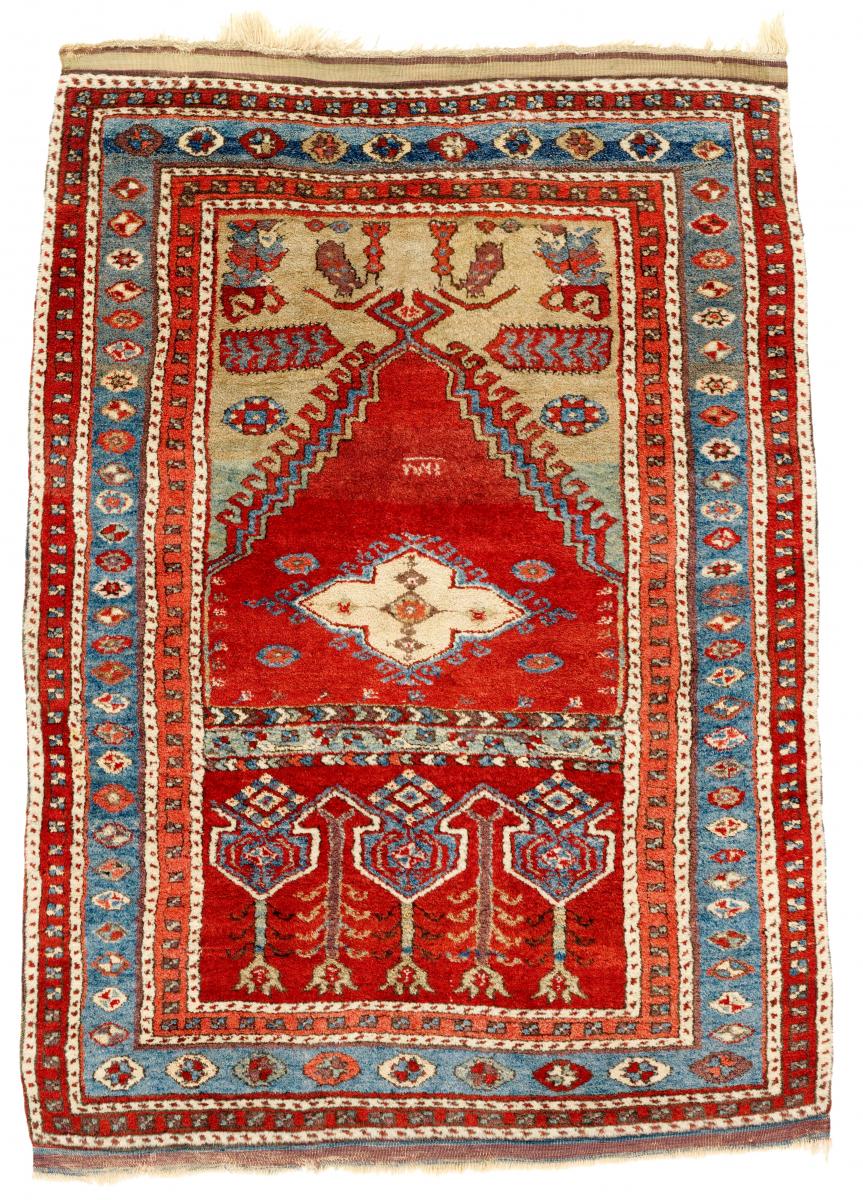 | 14211 Anatolian Prayer Rug, Turkey, 19th C (3rd Q)
This prayer rug was probably woven in eastern central Anatolia
and shows many of the design traits of classic Konya prayer
rugs. The red niche with its latch-hook motif melds traditional
with tribal aesthetics. The tight weave and thick pile, however,
are truly exceptional as is the quality of the wool.
SOLD
|
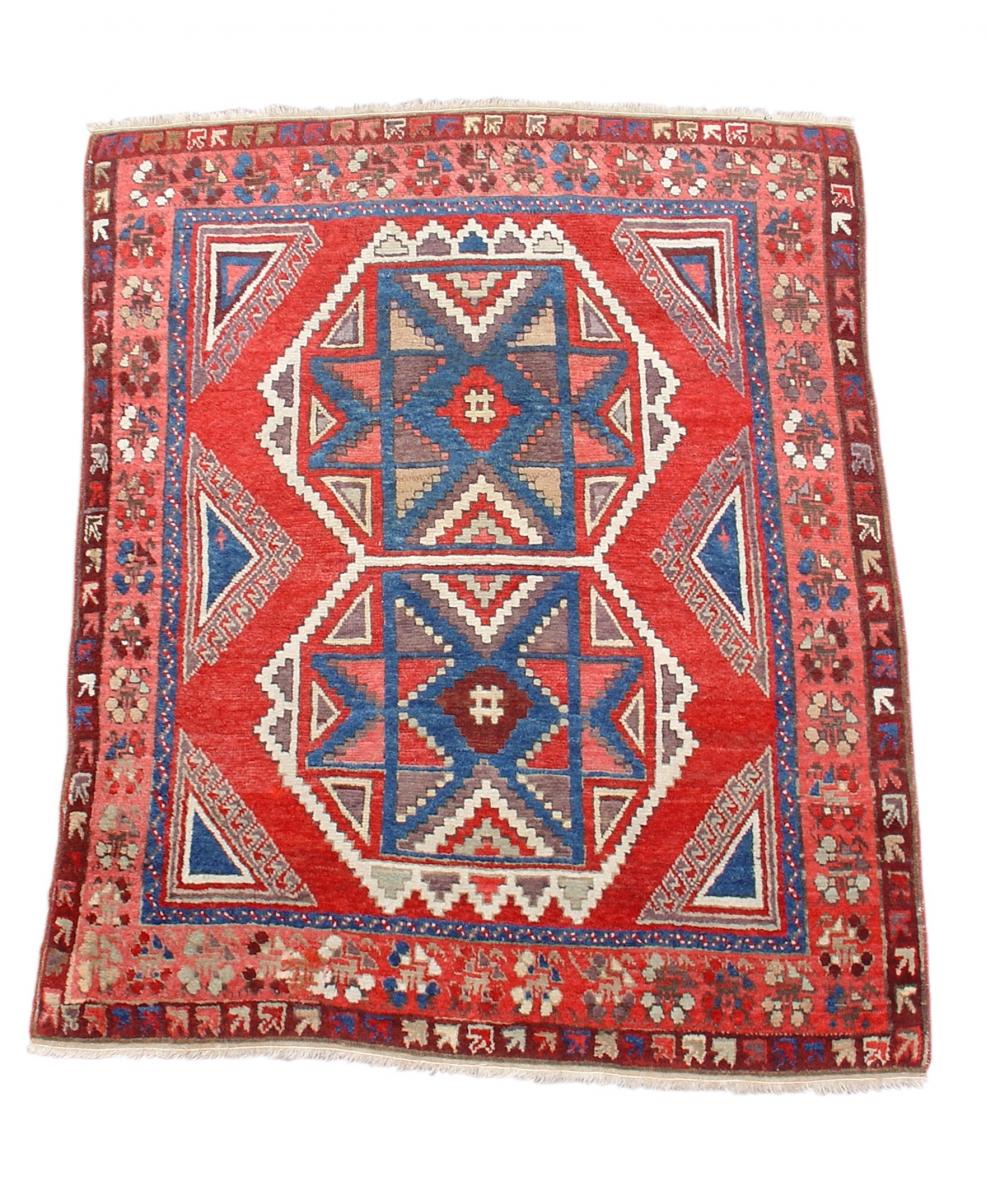 | 15024 Karapinar Rug 19th C (4th Q)
The double eight pointed star medallions as seen in this
piece appear in south central Anatolian weavings from at
least the seventeenth century. This example is exceptional
for its use of corner pieces as well as its red ground. The
floral elements of the border are more typically found in pieces
from the area around Konya. The graphic geometric drawing
and bold color exemplify authentic tribal and village weavings
from central Anatolia.
|
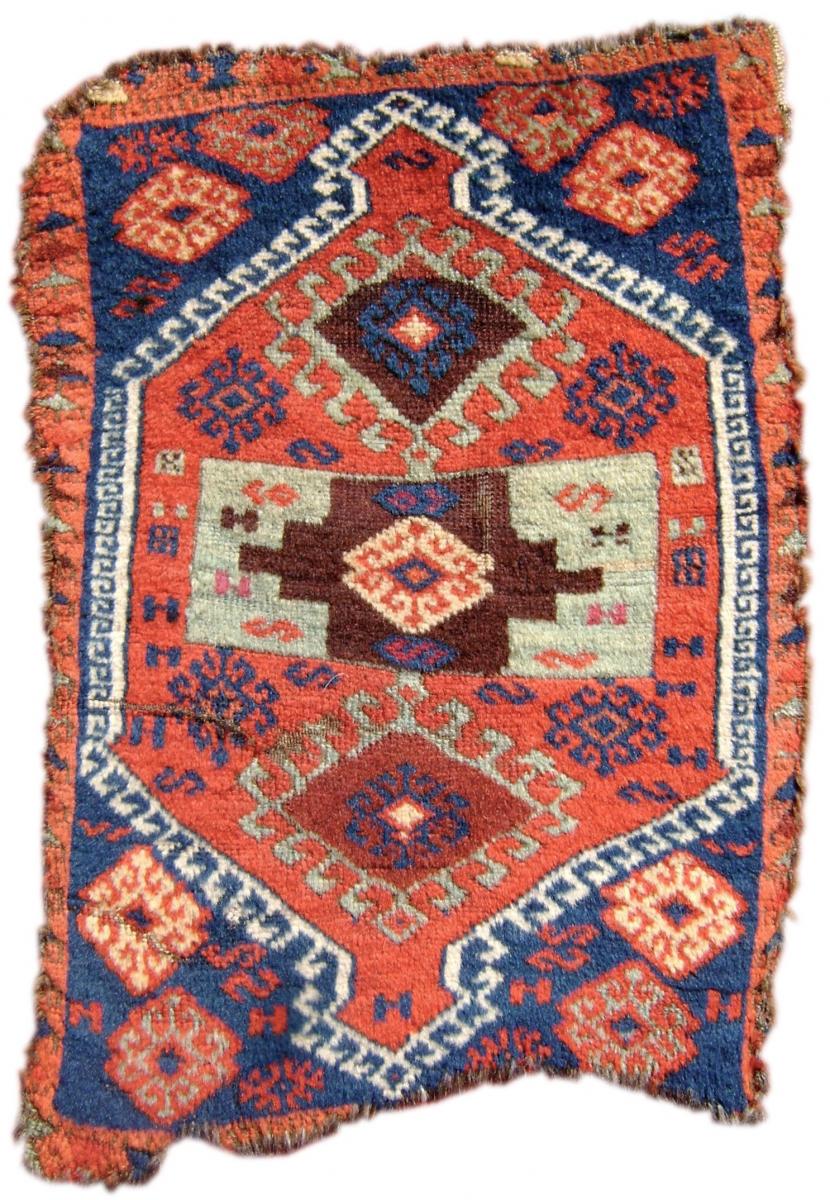 | 1534 Eastern Anatolian Yastik, Turkey, 19th c. (3rd quarter)
Yastik is a Turkish word meaning pillow and indeed this lively
little piece was woven as the decorative knotted pile front of
a pillow. The vibrant colors,including, madder, cochineal and
a distinctive Anatolian chocolate-aubergine,and medallion
design with a triangular amulet border is characteristic of
Kurdish weaving from southeastern Anatolia but the color of
this piece is notably superior, even for this group. Like many
tribal and village weavings, the weaver has placed great
emphasis on the interplay of color and flow ofdesign. While a
strong sense of proportion is conveyed, a strict sense of
symetry is not and intriguing playfulness is achieved.
|
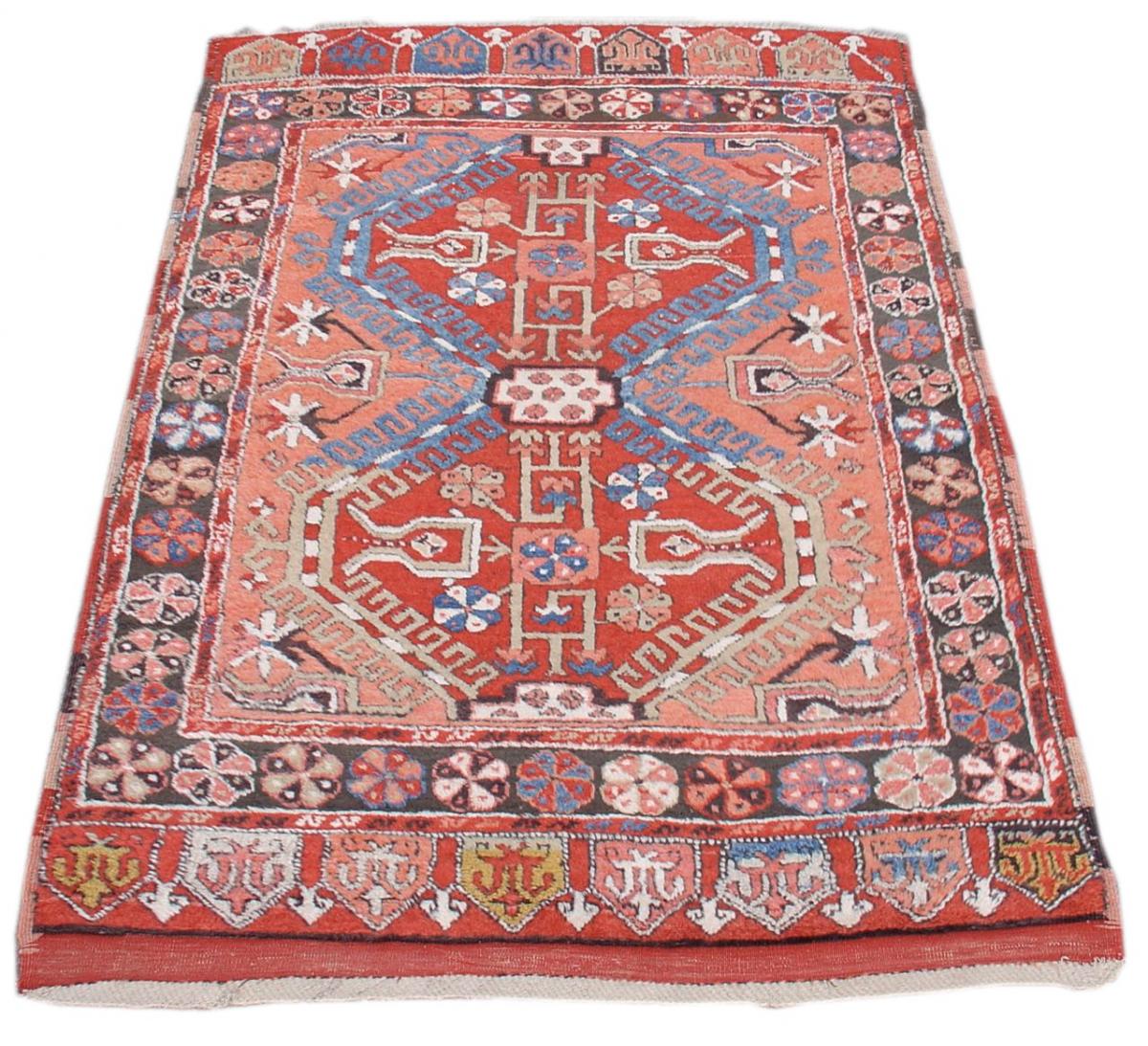 | 12296 Konya, Turkey, 19th C (2nd half) This rug with a distinctive apricot field is from the area around Konya in central Anatolia. Its thick wool and larger knots may indicate that it was woven as a sleeping rug or yatak. The colorful lappet ends reflect classical Ottoman influence as do the stylized tulips emanating from and within the medallions. The bold latch-hook ornament surrounding the two medallions is particularly well drawn with barber-poll centers and a color shift from green to blue that adds extra life to the composition. |
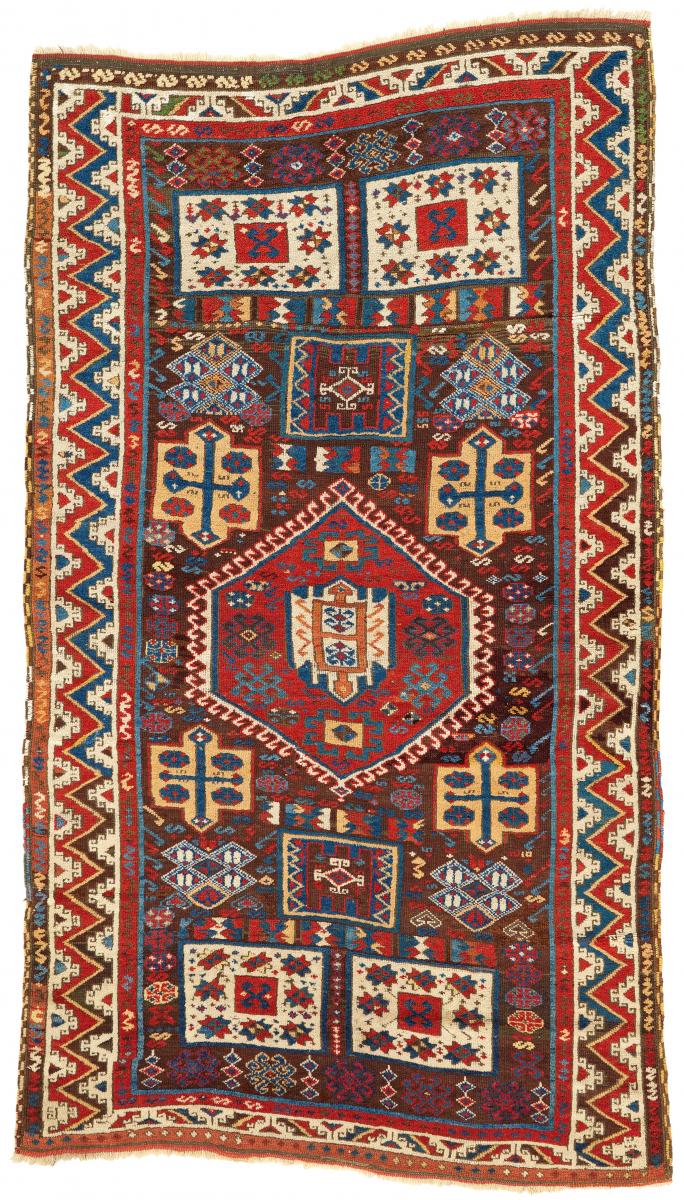 | 11970 Kurdish Rug, Eastern Turkey, 19th C (2nd Q) The design type of this carpet harkens back to a classical OttomanTurkish variant known as “large pattern Holbein’due to the proliferation of the type in the paintings of the sixteenth century master painter of the same name. The spirit of this weaving, however, is distinctly Kurdish. It was woven with the finest wool available in Eastern Anatolia, which in turn was some of the finest softest wool available in the world. The vivid colors and copious use of white compliment the bold and varied elements of design. Each of these is intriguing in its own right and maintain their own gravity while at the same time aiding in a powerful overall composition.
|
| |
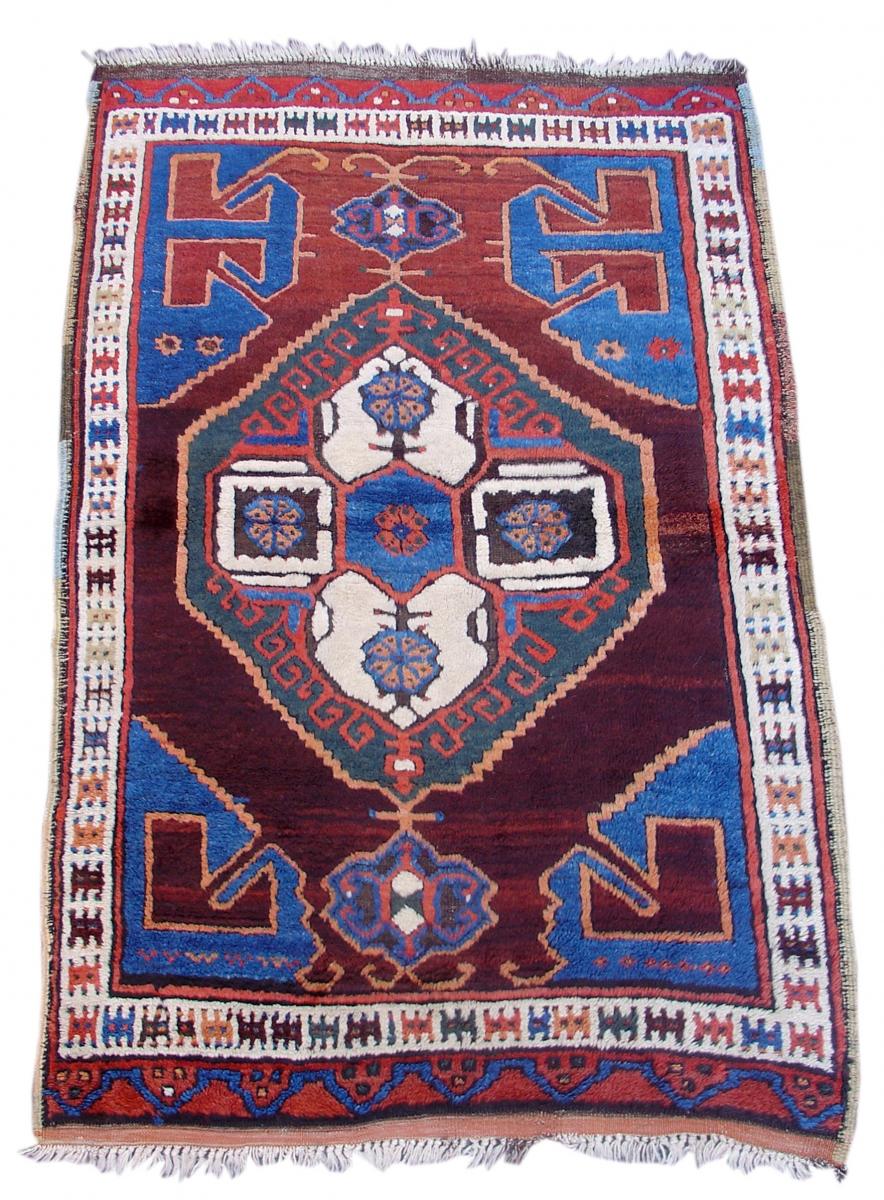 |
14837 Karapinar, Turkey, 19th C (4th Q)
The Karaman-Karapinar region of south central Anatolia,
where this rug originates, is well known for its long and
rich tradition of weaving. This type of rug with its
distinctive medallion and corner-pieces is perhaps the
region’s most iconic type. It’s dark deep hues are masterfully
balanced with the white of the inner medallion and border.
While the weaver clearly had the technical proficiency to create
a rigidly symmetrical design, in keeping with the aesthetics of
antique Anatolian weaving she has instead experimented with
proportion and drawing to create a more fluid and organic
composition.
|
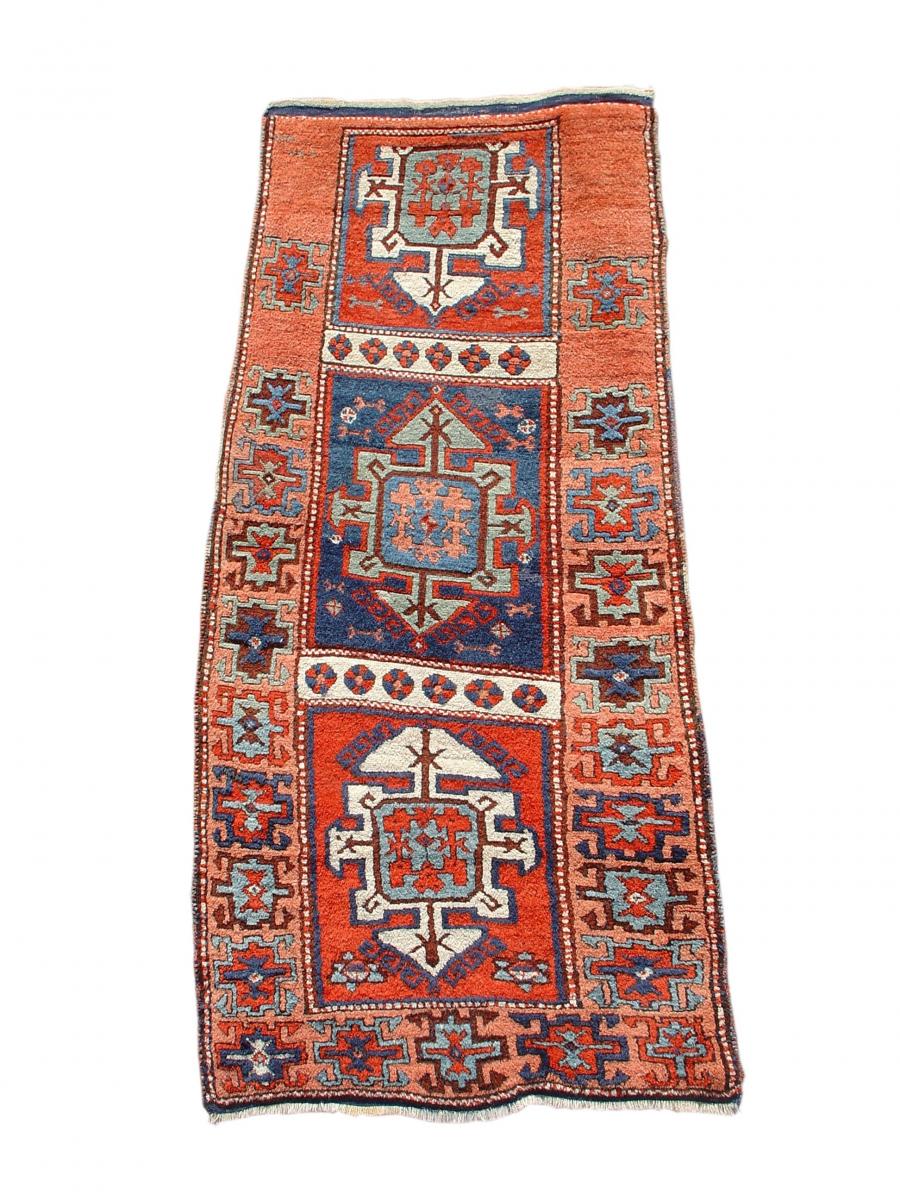
| 7241S East Anatolian Long Rug, Turkey, 19th C (3rd Q)
With its lush pile, bold graphic design, and superb clarity
of color this rug exemplifies the best qualities of Kurdish
weaving from Eastern Anatolia. Though derived from
classical Ottoman prototypes going as far back as at least
the sixteenth century, the sense of scale and proportion
evokes a clear village aesthetic. Note the almost musical
affect achieved by the varied but organic progression of
the spacing of elements within the border and the subtle
variation of scale seen in the elements and three
compartments of the field.
|
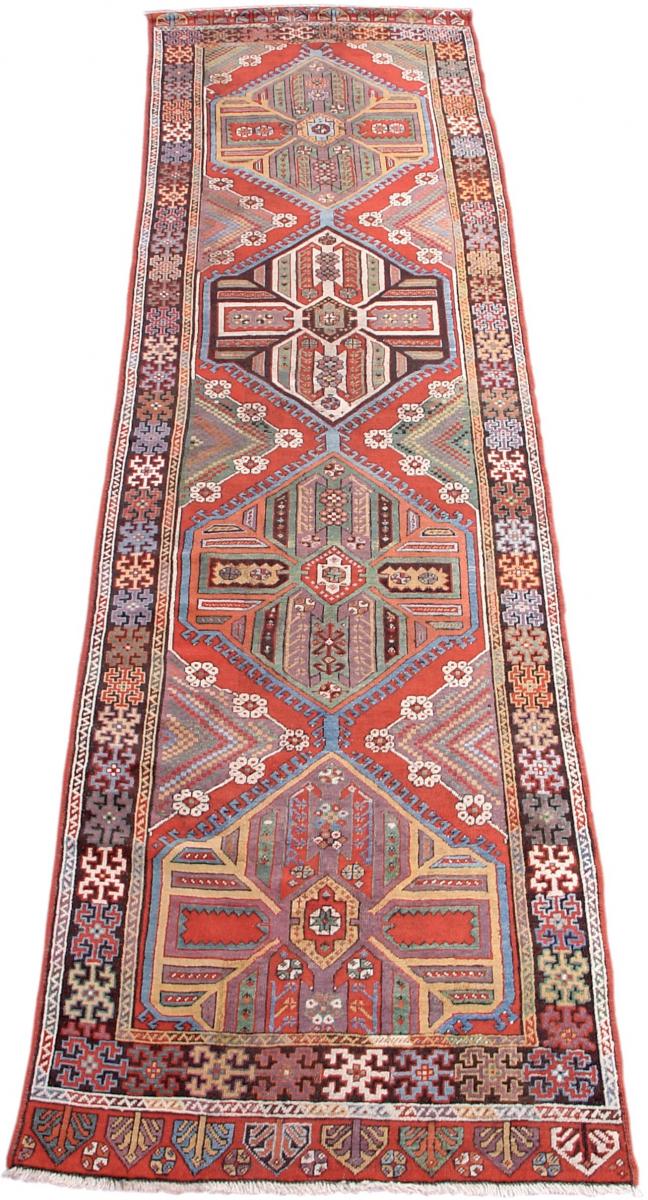 |
14621 Karapinar Runner, Turkey, 19th C (3rd Q) This fourteen foot central Anatolian runner has a pleasing
and balanced design. It is exceptional color, however, that
defines the piece. Four colorful jewel-like medallions are
set against a red field with intervening insets accented
with strings of white rosettes. Note the intensity of green,
several variations of blue, apricot, yellow and purple.
|
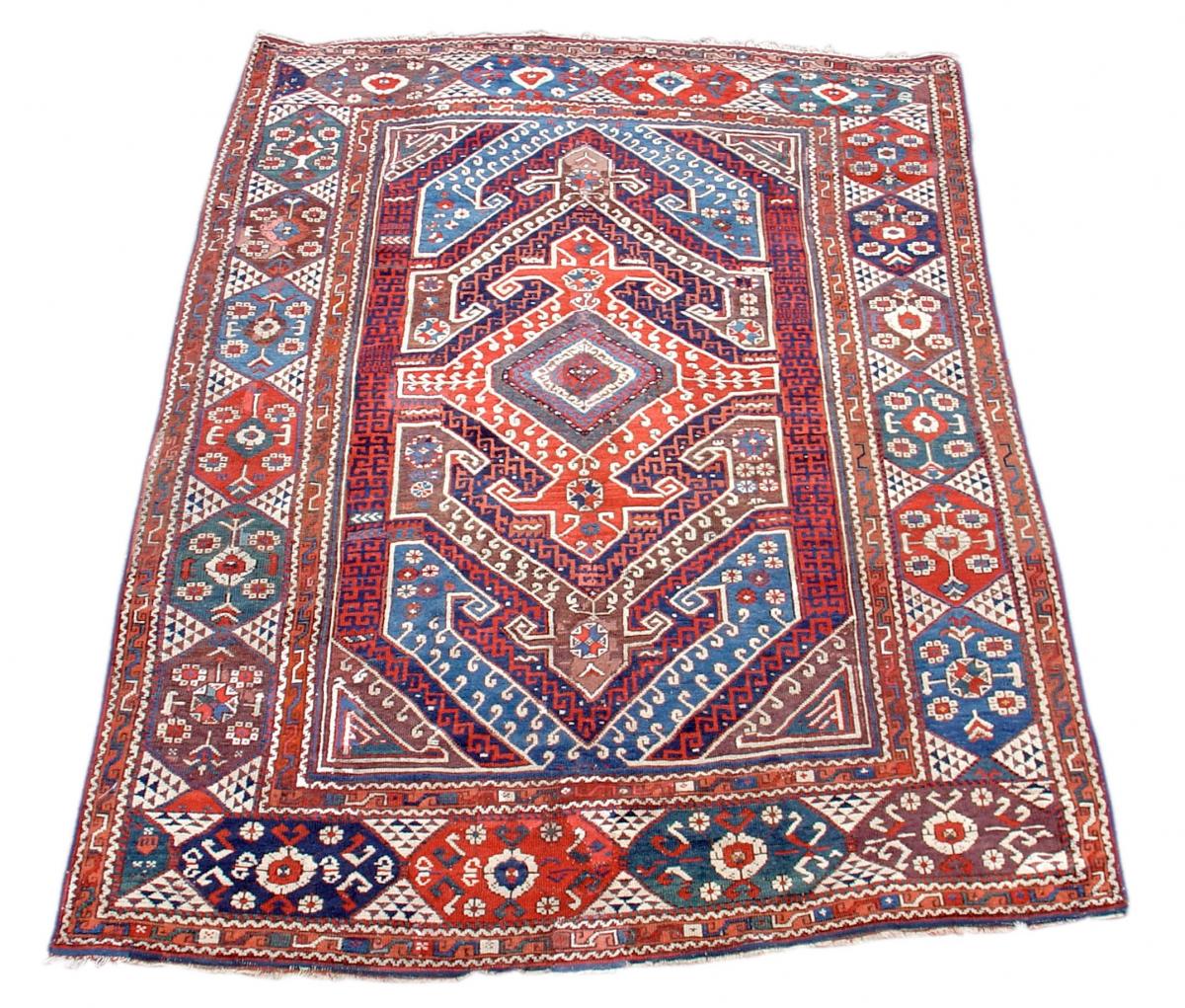 | 14586 Bergama Rug, middle 19th century
This bold antique village rug from western Anatoiia harkens
back to classical Ottoman weavings from the seventeenth
century while integrating Turkish village traditions of the
eighteenth and nineteenth. The type of cartouche border and
central medallion represented here probably originated in
classical Persian and Ottoman weavings of the fifteenth century
but became prevalent in this weaving group in the seventeenth.
Though classically inspired, the playful use of negative space
caused by the repetition and stacking of segments in the shape
of the medallion and theinterplay of geometric latch-hook forms
in the field engender a more playful and authentically Anatolian
village aesthetic.
|
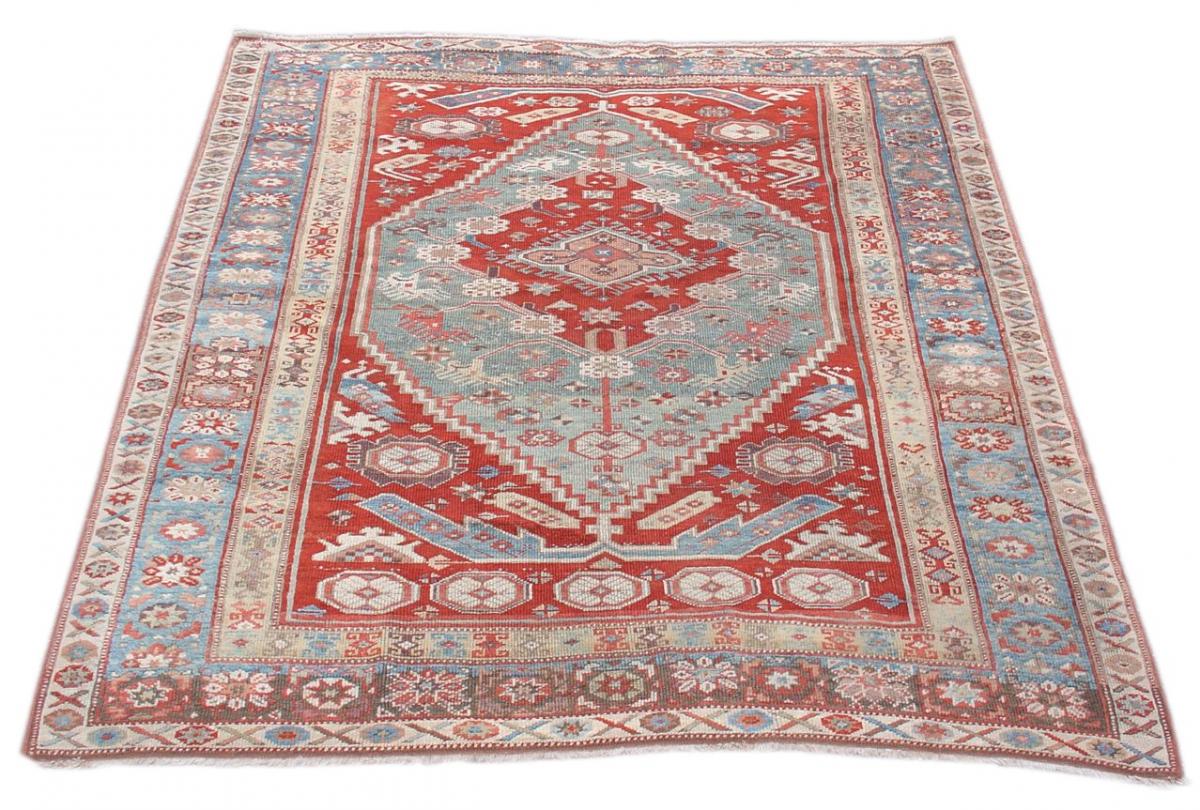
| 11966 Dazghiri Rug, Turkey, 19th C (2nd Q)
Woven in central western Anatolia, this rug combines a color
palette more typical of western regions with a design sensibility
which is arguably more characterisitic of central Anatolian weaving
traditions. The large sea-green outer medallion with its
arrangement of floral and vegetal motifs evokes the notion of a
celestial garden complimented by a tranquil light blue border. The
rich red gives the composition depth and balance.
|
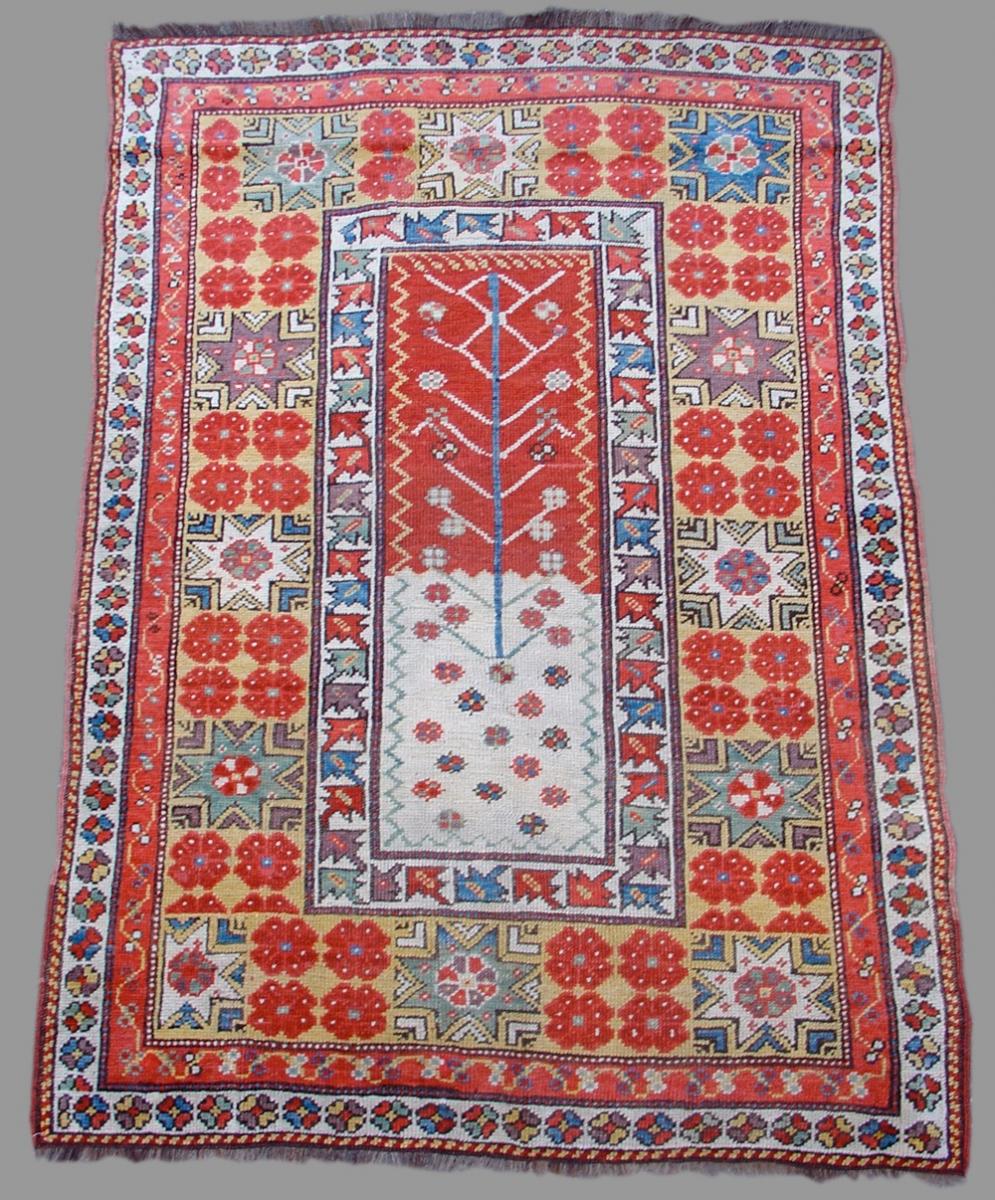
| 14876 Melas Rug, Turkey, 19th C. (3rd quarter)
This rug from the area of Milas in southwestern Anatolia,
despite its lack of a directional niche or 'mihrab', may have
in fact been woven as a prayer rug. Evidence for this is
lent by the rug's size and the highly stylized Tree of Life
depicted in the dramatic red and white sectioned field.
This piece masterfully balances juxtaposed opposites.
Varying curvilinear and angular repeats form distinctively
contrasting minor borders. This contrast is further mirrored
by the more jagged stars and rounded geometric clusters of
red flowers in the main border. Even the colors serve to
illustrate this principle of contrast with a more vivid tomato
red balanced against an array of more pastel colors ranging
from yellow to aubergine.
|
| | |






















